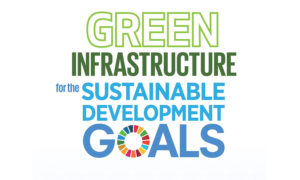Event Conference
An evidenced-based approach to resilient, sustainable infrastructure | tools and experiences

15 Nov 2018
10:00–12:00
Venue: International Environment House II (7-9 ch. de Balexert)
Organization: Geneva Environment Network, UNEP Resources and Markets Branch
Facing huge global challenges and an uncertain future, governments need to improve the long-term planning of infrastructure to ensure that the choices made now, against a backdrop of global population growth, rapid urbanization and climate change, are most appropriate to achieve long-term development goals of their nations. How can policy tools and data better support governments in their decision-making processes towards a resilient and sustainable future?
About this Session
UNOPS and Oxford University lead the ‘Infrastructure Transitions Research Consortium’ (ITRC), who will present on this important question and explore practical ways of developing resilient, sustainable infrastructure through the application of existing tools and processes, illustrated with diverse case studies drawn from the ITRC’s experiences to date.
UN Environment believes that innovative solutions to sustainable infrastructure from nature-based infrastructure solutions to smart & green technology deployment and integrated lifecycle assessment – would be crucial to unlock investment, foster partnership, and catalyze actions in response to these sustainability/environmental challenges, while proper decision making will lead to longer-lasting investments.
In the run-up to the next UN Environment Assembly, themed “Innovative solutions for environmental challenges and sustainable consumption and production”, UN.Environment, within the framework of the Geneva Environment Network, is pleased to host a talk that will feature the UNOPS/ITRC National Infrastructure Systems Model (NISMOD-int) and its application in Curação, and Palestine, as well as a Capacity Assessment Tool for Infrastructure (CAT-I) and country work carried out in Brazil, Serbia and Nepal.
Agenda
10:00-10:10
Welcome
- Fulai SHENG, Head, Economic & Fiscal Policy Unit, Resources & Markets Branch, UN Environment
10:10-11:00
Keynote
- Steven CROSSKEY, Head, Strategic Initiatives Infrastructure and Project Management Group, UNOPS
Steven Crosskey is a Civil Engineer with nearly 30 years of experience in the Civil Engineering industry, within both the private and development sectors. Steve has worked primarily in the planning and management of infrastructure projects involving urban and rural development initiatives, with a focus on road infrastructure and including access to markets, food security, and conflict sensitivity. In 2014, Steve joined the United Nations Office for Project Services (UNOPS). In his current role, has worked inter alia on new strategies to assist governments to provide infrastructure and project management solutions in the context of the global agendas, including the development of innovative tools to enhance the capacity of governments to plan, deliver, and manage infrastructure systems to meet development challenges. Steve holds a BEng. Honours in Civil Engineering from Oxford Brookes University. - Scott THACKER, Senior Analyst, UNOPS, and Honorary Research Associate, Environmental Change Institute, University of Oxford
Scott Thacker has 11 years of academic and professional experience with an international profile in infrastructure systems sustainability and resilience analysis. In his role with UNOPS, Scott is developing and demonstrating a range of pioneering infrastructure models and tools to support countries in prioritizing infrastructure investments and policies, to underpin national development objectives. Alongside interaction with infrastructure practitioners, Scott is an active member of the academic community. Scott holds a PhD in infrastructure systems modelling from the University of Oxford, an MSc in hydro-informatics and water management from Newcastle University and a BEng in civil engineering from Loughborough University.
11:00-12:00
Discussion and Q&A
- Emily FRANKLIN, Economic & Fiscal Policy Unit, Resources & Markets Branch, UN Environment
Summary
- Infrastructure underpins all SDGs, as outlined in the paper “Infrastructure: Underpinning Sustainable Development” published by UNOPS in October.
- Evidence-based infrastructure (EBI) attempts to identify the right types of infrastructure in achieving the SDGs.
- Infrastructure is beyond the asset in itself but relates to the whole system, requiring a big picture approach that incorporates economic, social, environmental, political and security implications.
- Transformational change is needed. One of the key challenges is the need to address short-term issues during this long-term transition, particularly in contexts with short-term political cycles.
- The CAT-I tool allows governments to take control of their own agendas through including them and assessing best practices.
- The NISMOD tool is used to support infrastructure decision-making. It was first developed in the UK, but is now being adapted to other contexts. It provides a national system-of-systems perspective, models different scenarios and identifies cross-sectoral interdependencies.
Videos
Documents
- Invitation
- Presentation by Steven CROSSKEY and Scott THACKER
- For more information on UN Environment’s Sustainable Infrastructure work stream
